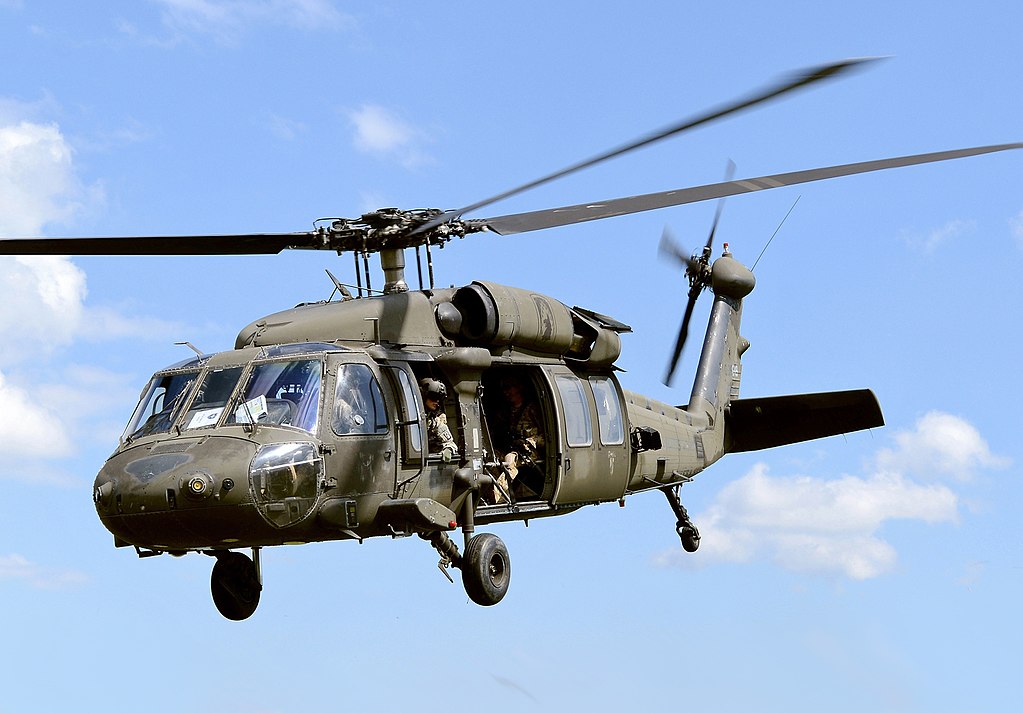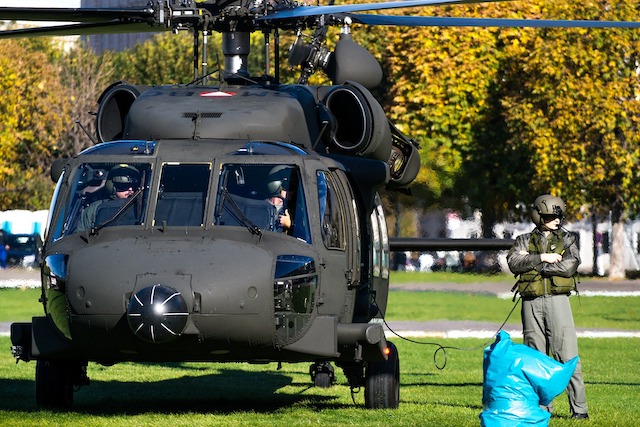Protecting Borders: UH-60 Blackhawk Function in National Safety
Protecting Borders: UH-60 Blackhawk Function in National Safety
Blog Article
Discovering the Background and Development of Uh 60 Helicopters
The evolution of UH-60 helicopters stands as a testament to the unrelenting pursuit of innovation in air travel modern technology. From their humble starts to turning into one of one of the most versatile and commonly used aircraft in military procedures, the trip of these helicopters is an interesting one. As we dive into the history of UH-60 helicopters, we uncover not just a timeline of innovations however additionally the crucial duty they have played in forming modern war. Join us as we uncover the fascinating story behind the UH-60 helicopters and explore the effect they proceed to have on army methods and operations worldwide.
Early Origins and Growth
The early beginnings and growth of the Uh-60 helicopters can be traced back to the requirement for a functional and reputable airplane for various armed forces operations. In the late 1960s, the USA Army acknowledged the constraints of existing helicopters and initiated the Energy Tactical Transport Aircraft System (UTTAS) program to create a brand-new generation of utility helicopters. This program intended to address the drawbacks of older helicopter versions by including advanced technologies and boosted performance capabilities.

Introduction of the UH-60 Black Hawk
With the UH-60 Black Hawk's entry right into service, a new period in armed forces aviation dawned, noting a significant innovation in capabilities and convenience for the United States Military. Introduced in 1979, the UH-60 Black Hawk was designed as a multi-mission helicopter to change the aging fleet of UH-1 Iroquois helicopters. The Black Hawk's advanced attributes, consisting of twin engines for enhanced power and survivability, a four-blade major rotor system for enhanced lift efficiency, and a roomy cabin efficient in suiting approximately 11 completely geared up troops, reinvented the Army's air attack and utility abilities.
The UH-60 Black Hawk swiftly confirmed its well worth in a range of goals, from army transport and medical emptying to unique operations and search and rescue. Its flexibility and integrity were more demonstrated throughout Operation Urgent Fury in Grenada in 1983 and the invasion of Panama in 1989. The Black Hawk's success resulted in its extensive adoption not only by the U.S. Army however additionally by many various other army pressures and federal government companies worldwide.

Technical Improvements For Many Years
Throughout the advancement of the UH-60 Black Hawk helicopters, substantial technological innovations have actually consistently boosted their efficiency and capabilities. Among the crucial improvements is the combination of sophisticated avionics systems, including digital cockpits with multifunction displays, trip monitoring systems, and progressed communication systems. These renovations have not only enhanced the situational recognition of the team however have likewise streamlined the overall procedure of the airplane.

Additionally, the adoption of much more powerful engines has considerably boosted the UH-60 Black Hawk's rate, ability to move, and lift ability. The most up to date versions are outfitted with a lot more effective turboshaft engines that give better power outcome while preserving fuel performance.
Role of UH-60 in Armed Force Procedures
Having undertaken substantial technical innovations over the years, the UH-60 Black Hawk helicopters play a crucial role in numerous armed forces operations as a result of their convenience and dependability. These helicopters are widely made use of for objectives such as troop transportation, clinical discharge, air assault, and unique procedures. The UH-60 is particularly valued for its capability to operate in varied atmospheres, varying from complicated urban settings to sturdy terrains, giving military pressures with a very versatile aerial system.
The UH-60's function in sustaining ground pressures, performing reconnaissance objectives, and giving logistical support additional emphasizes its importance in modern armed forces procedures. In general, the UH-60 Black Hawk helicopters proceed to be essential possessions for armed forces around the globe, enabling them to accomplish their goals with accuracy and efficiency.
Modern Applications and Future Leads
In the contemporary landscape of military operations, the UH-60 Black Hawk helicopters continue to show their adaptability and calculated value via cutting-edge innovations and developing objective abilities. Among the vital modern-day applications of the UH-60 is its critical role in clinical evacuation goals, where its convenience and rate contribute in promptly moving injured employees from the combat zone to clinical facilities. Additionally, the UH-60's sophisticated avionics systems and improved maneuverability make it a valuable property try here in special operations, including insertion and removal of unique forces in aggressive settings.
Looking in the direction of the future, the UH-60 system is poised to undergo more innovations to boost its abilities. Future potential customers for the UH-60 include the assimilation of self-governing trip innovations to improve functional efficiency and reduce human mistake. Moreover, advancements in products science and propulsion systems might cause improvements in the helicopter's haul, variety, and performance capacity, guaranteeing its continued importance in modern war situations. As military needs evolve, the UH-60 Black Hawk helicopters are expected to innovate and adjust to fulfill the difficulties of tomorrow's functional environments.
Verdict
In conclusion, the history and evolution of UH-60 helicopters have actually been marked by considerable innovations in modern technology and their important function in military operations. From their early origins to their contemporary applications, these helicopters have actually continuously adapted to satisfy the altering requirements of the military - uh-60 blackhawk. With continuous advancements in technology, the future potential customers for UH-60 helicopters stay appealing as they remain to play an important duty in various military goals
Sikorsky Airplane Firm, a distinguished helicopter manufacturer, reacted to the UTTAS program's demands by creating the UH-60 Black Hawk helicopter. Presented in 1979, the UH-60 Black Hawk was made as a multi-mission helicopter to replace the aging fleet of UH-1 Iroquois helicopters.Having gone through significant technical improvements over the years, the UH-60 Black Hawk helicopters play a critical duty in different military operations due to their flexibility and reliability.In the modern landscape of army operations, the UH-60 Black Hawk helicopters proceed to show their versatility and calculated significance via cutting-edge technologies and evolving goal abilities. As military needs advance, the UH-60 visit here Black Hawk helicopters are expected to introduce and adjust to meet the obstacles of tomorrow's functional environments.
Report this page